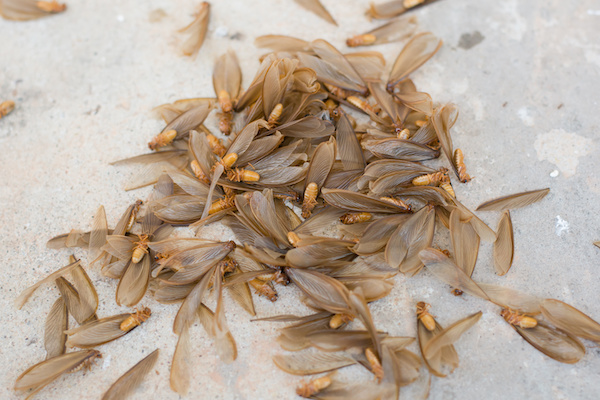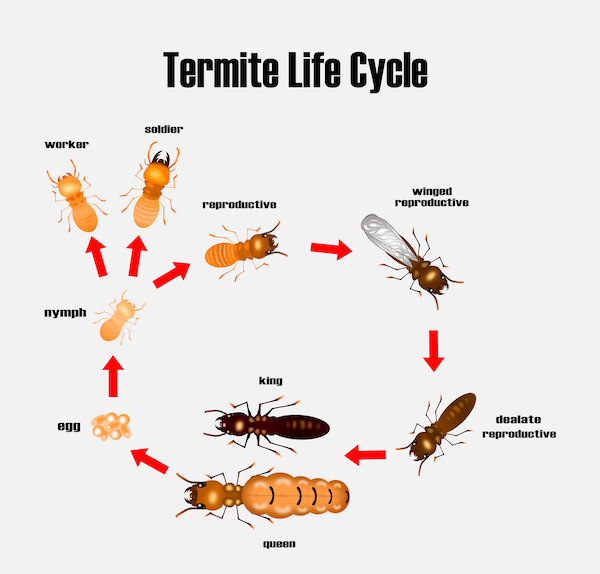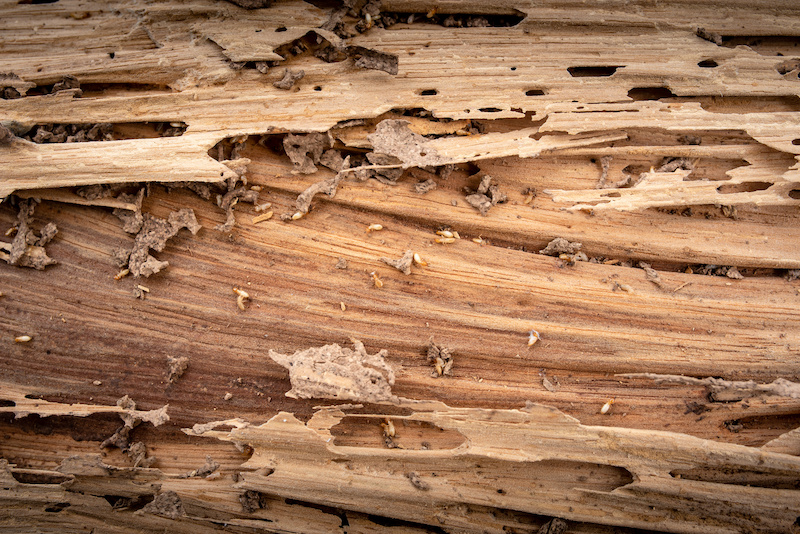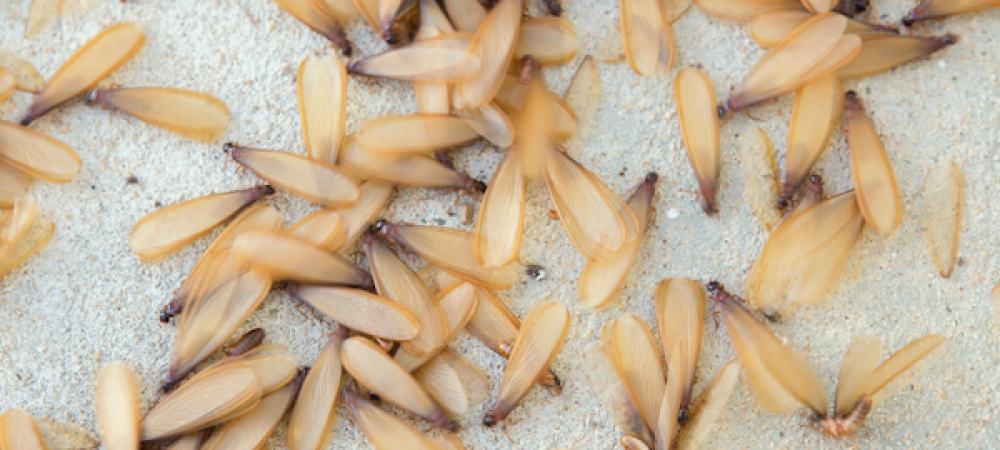Winged termites, also known as swarmers or alates, are key players in the termite reproductive process. Although they might look similar to flying ants, winged termites have distinct characteristics and behaviors that set them apart from other high-flying insects.
Knowing more about alates is vital for homeowners and property managers. It can help you identify a potentially large and long-standing termite infestation festering on your property.
In this blog, we’ll explore winged termites more, covering their identification, life cycle, significance, and ways to prevent and treat termite infestations. Let’s dive in!
Identifying Winged Termites

Reproductive termites typically measure around half an inch in length and have straight, bead-like antennae. Their bodies are dark brown or black, with two pairs of wings equal in size and shape.
Winged termites and flying ants appear similar at first glance, but there are a few key differences that set them apart. While termites have wings of equal size, flying reproductive ants have larger front wings and smaller hind wings.
Plus, termites have straight, bead-like antennae, while ants have elbowed or bent antennae. Termites have straight, thick waists, while ants have narrow, pinched waists.
Why does this matter? Understanding the difference between a minor ant infestation and a termite infestation can save you time and money. Termite damage can lead to substantial financial losses, potentially costing thousands of dollars in repairs and treatment expenses.
Thankfully, spotting these sneaky insects when they emerge from their colonies is not too hard. During warmer months, like the spring or early summer, female and male termites will exit their parent colonies in droves, heading toward sources of light windowsills, door frames, or light fixtures.
Flying Termites Take a Dangerous Journey to a New Life | Deep Look
If you suspect termite alates are flitting around your home, inspect any spot with an ample amount of wood, like basements, crawl spaces, and attics, as termites often infest wooden structures to feast on cellulose.
Life Cycle and Behavior

After taking to the air, winged termites release pheromones to attract potential mates. They form mating pairs either in mid-air or shortly after landing. Together, they search for suitable locations to establish a new colony.
Once they land, the mated termites begin excavating a new nest, typically burrowing into soil, wood, or other suitable materials to create a chamber where the queen can lay eggs and start a new colony.
The life cycle of a termite starts with the egg stage. Once the queen mates and establishes her nest, she begins producing eggs and caring for her brood until they mature enough to assume their roles within the colony.
As the eggs hatch, nymphs emerge, appearing as immature termites both physically and visually. These nymphs undergo multiple molts as they grow and develop, progressing through several instars and gradually acquiring adult characteristics.
As they mature, they take on various responsibilities within the colony, such as tending to the young, foraging for food, maintaining the nest’s structure, or protecting the colony.
Upon reaching adulthood, termites assume specific roles dictated by their caste, including workers, soldiers, reproductives, or supplementary reproductives. This cycle continues indefinitely unless disrupted by pest control measures or the queen’s death; however, termite queens tend to stick around!
A queen’s lifespan varies depending on factors like the species, environmental conditions, and the overall health of the colony. Generally, termite queens have the potential to live for several years to decades, with some queens known to live as long as 20 to 30 years!
King termites generally have shorter lifespans compared to queens. While they can live for several years and consistently outlive the workers and soldiers, their lifespan does not typically exceed that of the queen.
What Do Winged Termites Mean For My Home?

If you see winged termites in your home, there’s a good chance you may already have an existing infestation. Most termite colonies won’t produce winged reproductives until well-established, meaning an infestation could be brewing under your feet.
Reaching this level of maturity takes a few years; some species may take longer, while others might swarm earlier under favorable conditions. In temperate regions, termites begin swarming during spring and summer, coinciding with periods when environmental conditions are most favorable for reproduction and colony expansion.
So, why do winged termites matter to you? Although their appearance may not immediately pose a threat, it does suggest that a termite colony is nearby, and these new queens and kings could set their sites on your home as their next breeding grounds.
Identifying and addressing termite activity is crucial to prevent further infestation and minimize damage to your home or business. Quick action can significantly reduce your risk of termite damage and protect your property’s structural integrity.
Your home is a significant investment and an integral part of your life! At the first sign of termites, you should reach out to a pest control professional for an inspection and termite treatment. In fact, regular inspections and preventative ambiance can even help deter future infestations and protect the long-term health of your property.
Northern Virginia and Maryland homeowners are no strangers to pests, especially termites. Our specialized termite treatment can swiftly pinpoint termite activity in your home and quickly eliminate them.
Our comprehensive service begins with an inspection of your property. We’ll then share our findings with you and a personalized treatment plan designed to suit your home’s unique needs.
Termites are relentless creatures! In just a few months, a colony can make a massive impact on your home, leaving you with costly repairs and impacting your home’s value. That’s why our termite protection plans are essential.
Contact us today to discover how we can protect your home from these wood-destroying insects!
We also offer Wood Destroying Insect Reports (WDIR) to give you peace of mind before putting your house on the market or buying a new home. Our thorough inspection will give you the clarity you need to make an informed decision about your property! Contact Connor’s Pest Pros today for quality pest control in Northern Virginia, Maryland, and the District of Columbia!



